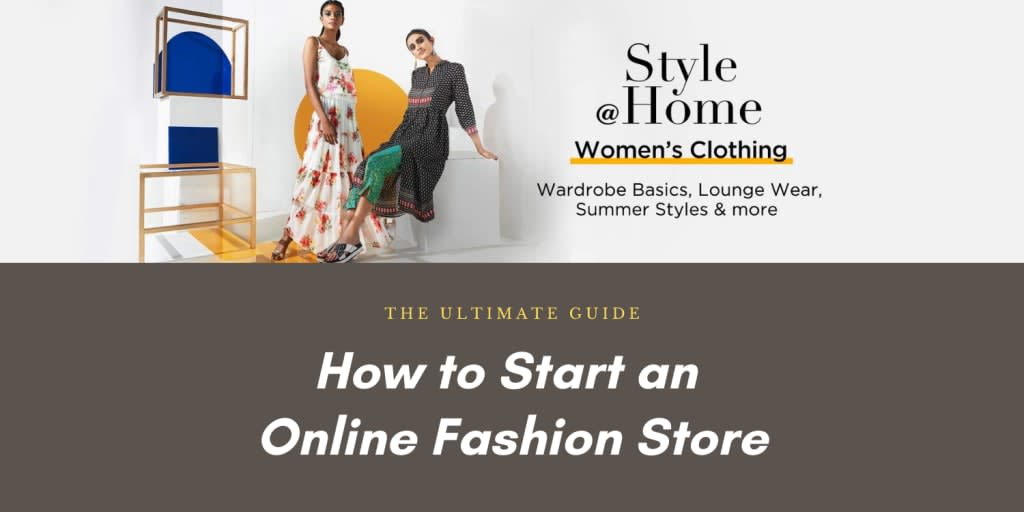How to Start a Fashion eCommerce Marketplace?
Create Fashion eCommerce Marketplace

The fashion industry has been steadily leaning towards online platforms for the last many years. According to recent market research, eCommerce now accounts for a substantial portion of fashion retail, with global fashion eCommerce sales projected to reach over $1.4 trillion globally by the year 2027. Furthermore, multiple reports reveal that approximately 75% of fashion customers prefer shopping online due to its convenience, extensive product selection, and personalized shopping experience.
Entrepreneurs seeking to capitalize on this burgeoning trend can think of starting a fashion marketplace that offers numerous benefits and unparalleled potential for growth. Apart from accessing a global audience, fashion platforms provide a versatile space to showcase a wide array of styles and designers, offering customers an enriching and curated shopping journey.
Before delving into the key steps to starting an online fashion marketplace, we cover the benefits that customers really want from fashion eCommerce platforms.
What Do Customers Seek in the Fashion eCommerce Market?
The way of shopping in the early decades and now in the modern era has evolved. The increased mobile penetration and internet usage have changed customer demands and shopping behaviors. They want quality, comfort, and affordability all in one place. Simply put, the customers expect more than just the products and it includes the following:
Effective Search: Search relevancy and convenience play a significant role in customer satisfaction. Fashion marketplaces should optimize their search functions and filters. It enables customers to find their desired products easily and quickly.
Individualized Service: Customers expect personalized recommendations that align with their unique tastes and preferences. Here, utilizing customer data analytics, fashion marketplaces can offer tailored product suggestions, enhancing customer engagement and loyalty.
Careful Consumption: Modern customers are increasingly conscious of the environmental and social impact of their purchases. According to the report, 67% of global customers are willing to pay extra for sustainable products. Here, fashion marketplaces can cater to this demand by curating a selection of ethically produced fashion goods.
Capable of Making Mindful Choices: Transparency and detailed product information empower customers to make informed decisions. By providing comprehensive product descriptions and size guides, customer confidence will boost and the likelihood of returns will reduce.
Steps to Start a Fashion eCommerce Marketplace
Now, as we covered the benefits customers really want when they do fashion shopping online, the next thing is to begin building the fashion eCommerce platform. The below-given steps can help in starting fashion eCommerce success efficiently.
Perform Market Research
Launching a successful fashion eCommerce business hinges on two key factors: identifying high-demand fashion products and understanding buyers’ needs. By pinpointing the market gaps and seizing business opportunities, you can establish a compelling platform that resonates with platform users’ needs and gain significant traction.
Assess a Fashion Sub-Niche
In the vast fashion industry, it’s essential to narrow down your focus and target a specific sub-niche that caters to your defined audience. Sub-niches may include shoes, accessories, bags, clothing, and more. This step will help you carve out a distinct identity and better cater to your customer’s needs.
Determine Essential Marketplace Features
Below are discussed some of the key features required for seamless marketplace operations and better user experiences.
Product Catalog: To assist customers make informed decisions, fashion products require accurate and detailed descriptions. Further, creating a rich and informative product catalog with detailed functionalities will empower buyers to shop with confidence.
Advanced Reports and Analytics: Reports and analytics provide valuable insights into platform performance, availability of products, user satisfaction, and other important aspects.
Quick and Efficient Search: Buyers do not prefer spending much time finding the goods. Here, the platform must be featured with quick searching, filtering, and sorting options to let them quickly find the product and make the purchase.
Decide on the Development Approach
The selection of the development approach holds the key to marketplace success including vital factors like customization and scalability. Two primary options are: the traditional method of custom development and leveraging a turnkey software solution. Let’s delve into these options.
Custom-Built Approach: To kickstart a marketplace, one can either assemble an in-house team of experts or outsource the development needs. Nevertheless, this approach demands substantial time and capital investment, leading to extended time-to-market for the business.
Choose Readymade Fashion eCommerce Software: Embracing turnkey solutions equipped with core marketplace features significantly reduces development costs and time as compared to the legacy approach. It expedites the business’s time-to-market while enabling the integration of distinctive features that competitors haven’t tapped into yet.
Fortunately, Yo!Kart is one leading self-hosted eCommerce software that has all the advantages associated. It provides complete control over the source code, enabling efficient customizations. Yo!Kart is feature-rich and coupled with a wide array of third-party APIs to let entrepreneurs start their businesses with minimal effort. All in all, it reduces the total cost of ownership and quickens the platform’s time-to-market.
Conclusion
Starting an online fashion business is not an easy feat as it requires a lot of planning, constant effort, and efficient execution. The industry is experiencing an upward trajectory, and there are multiple affordable ways to enable the successful start of online fashion platforms. For example, keeping an eye on trends and customer wants is vital when entering the fashion eCommerce market. Besides, if you have the right fashion eCommerce software and a solid business plan on your checklist, there must be no delays in the execution of the marketplace concept.
About the Creator
Rajnish Kumar
I am Rajnish Kumar, Team Lead: SEO/ORM at FATbit Technologies. I help aspiring entrepreneurs in choosing the right business idea as per their needs & goals, as well as guide them on executing that business idea effectively.
Enjoyed the story? Support the Creator.
Subscribe for free to receive all their stories in your feed. You could also pledge your support or give them a one-off tip, letting them know you appreciate their work.






Comments
There are no comments for this story
Be the first to respond and start the conversation.